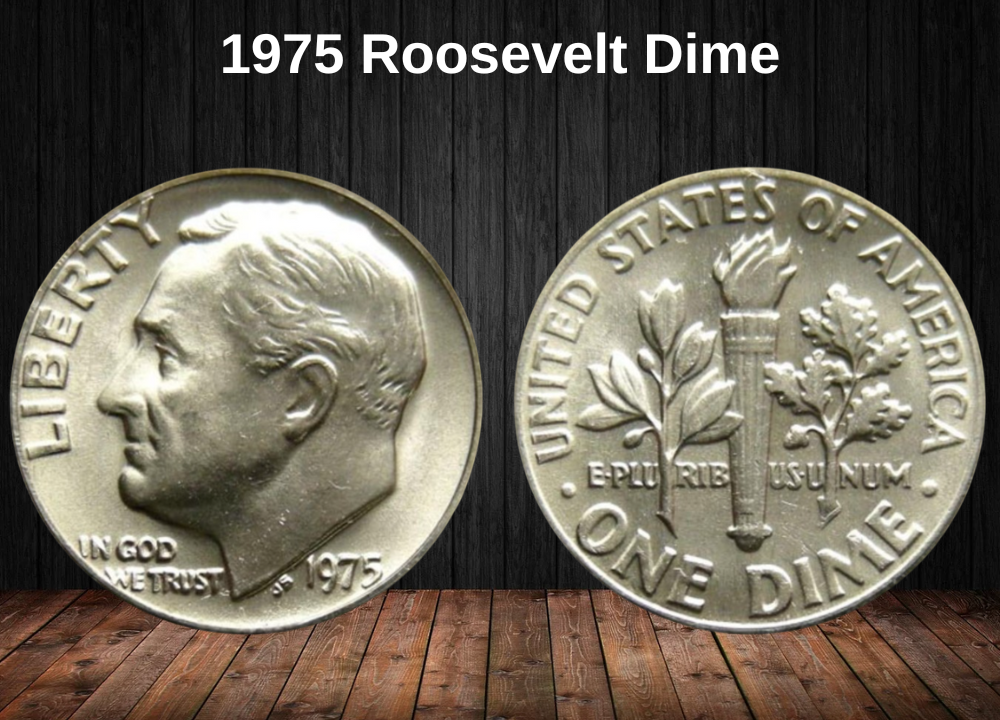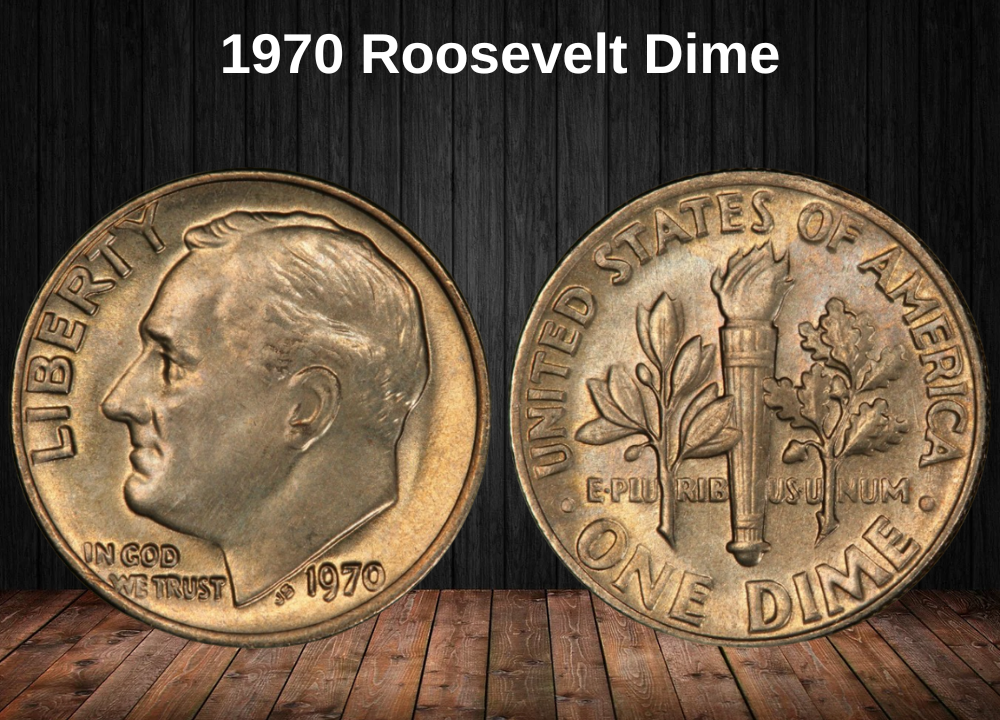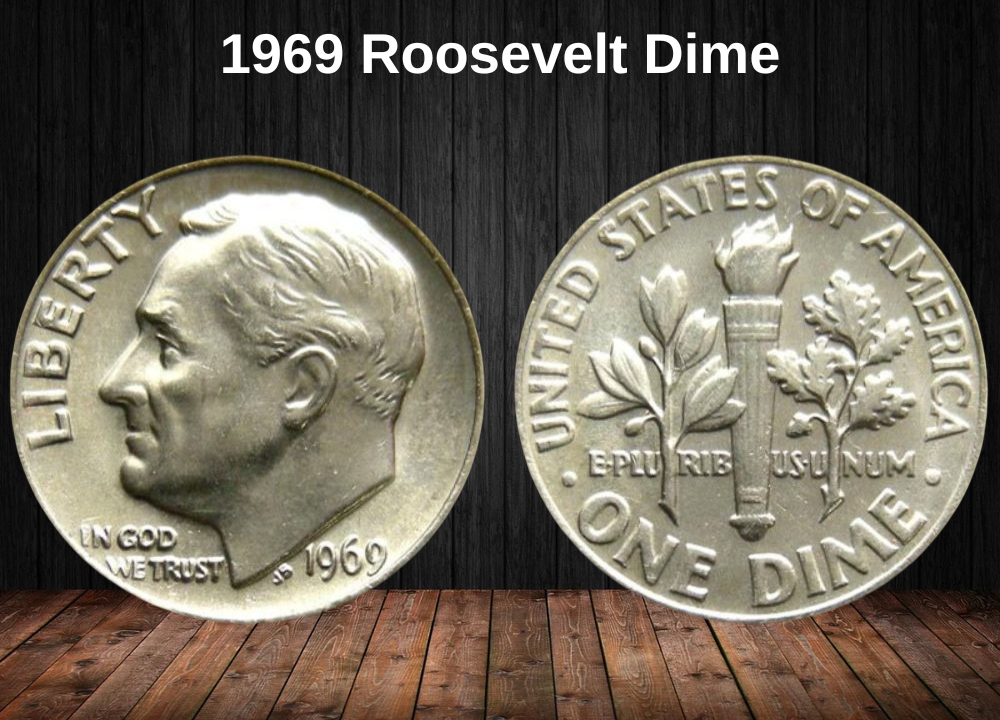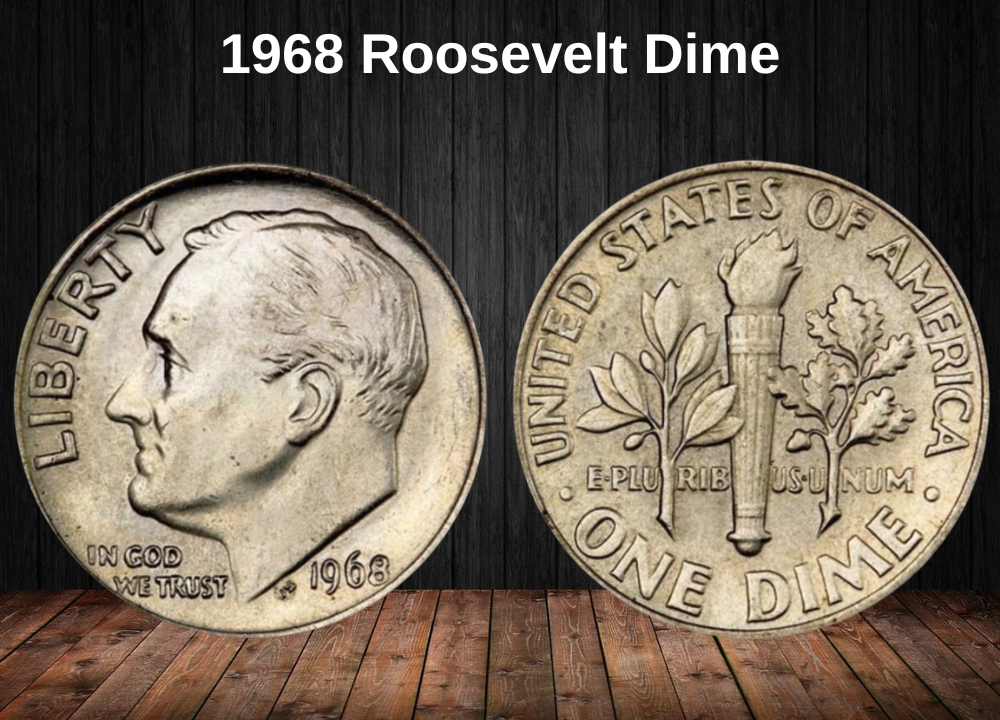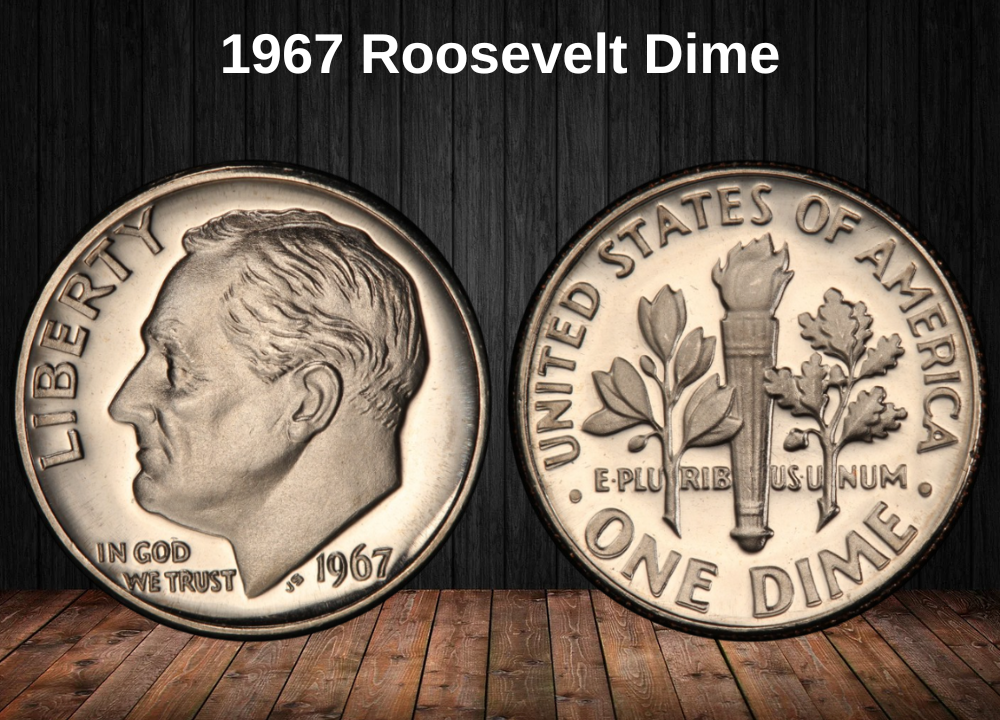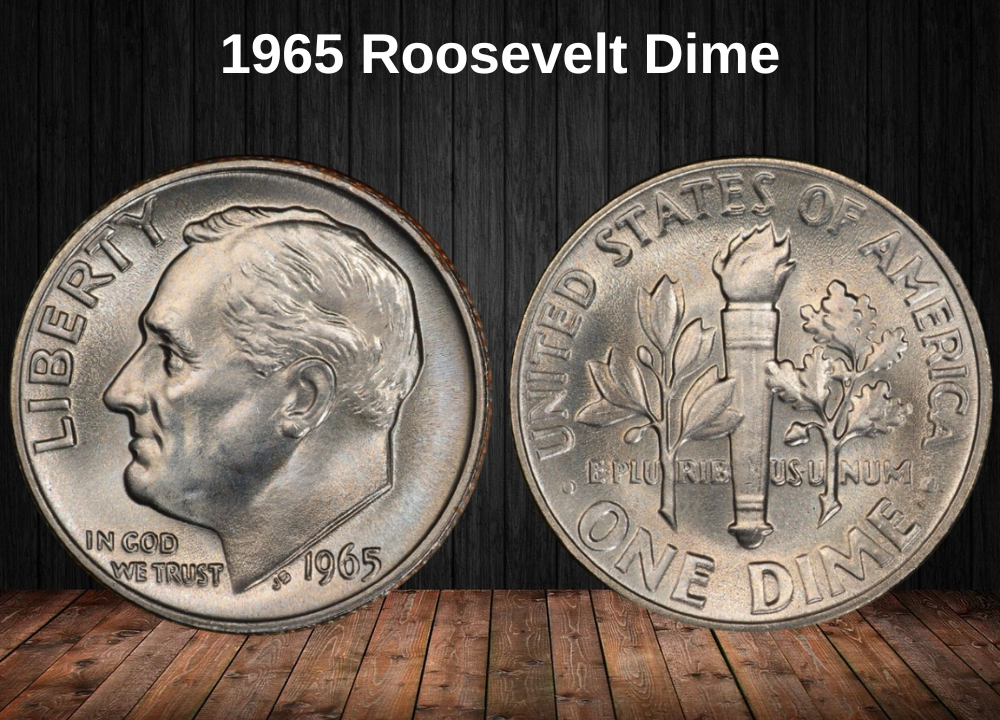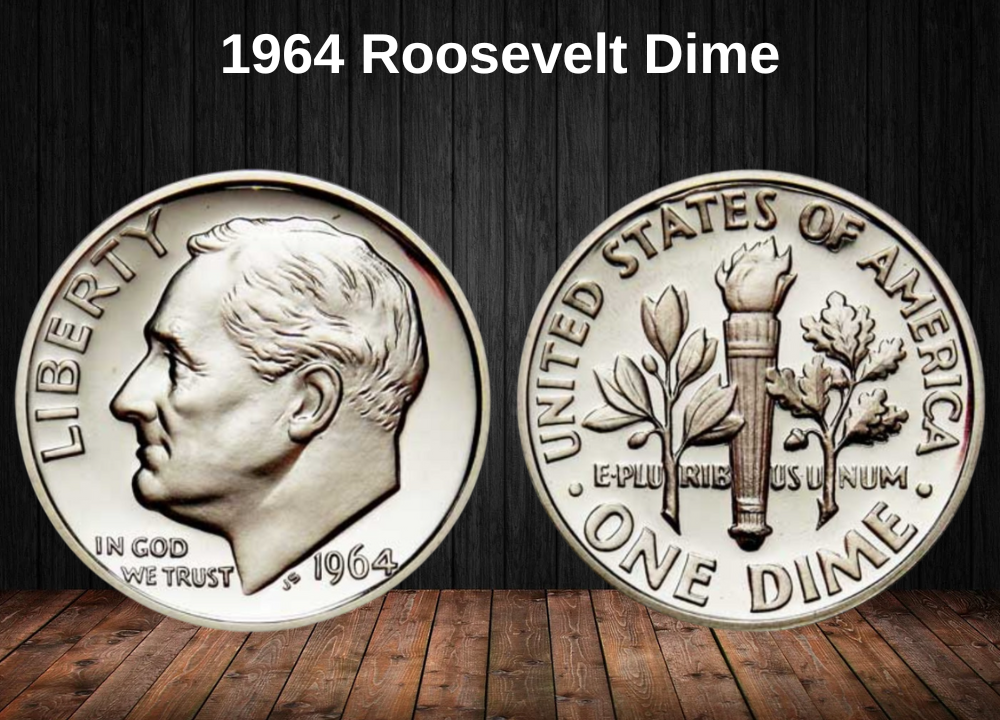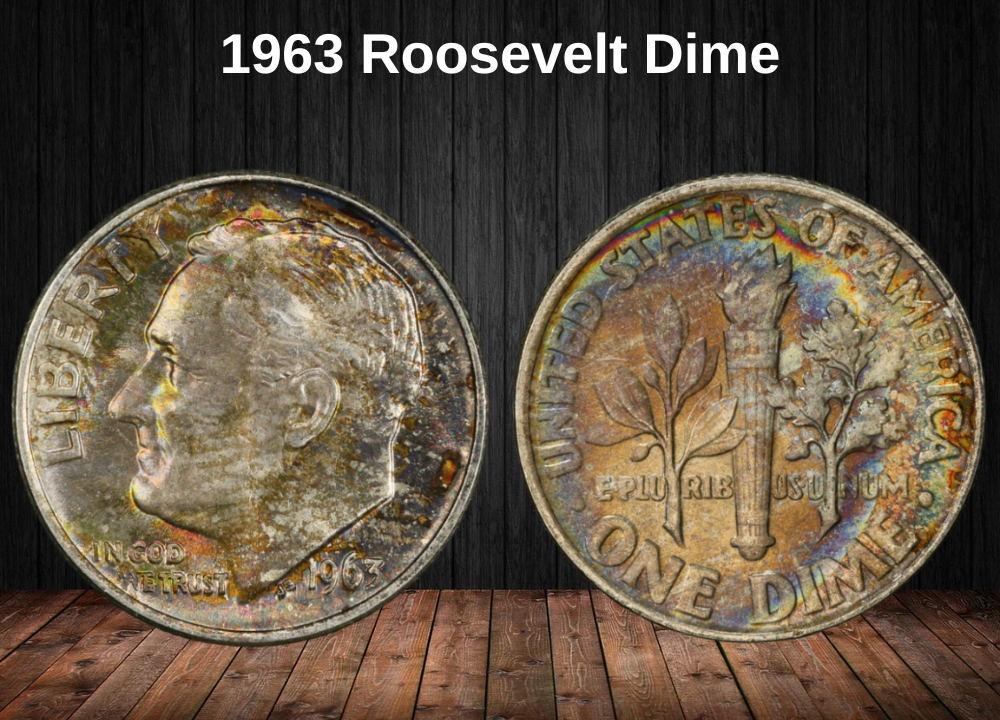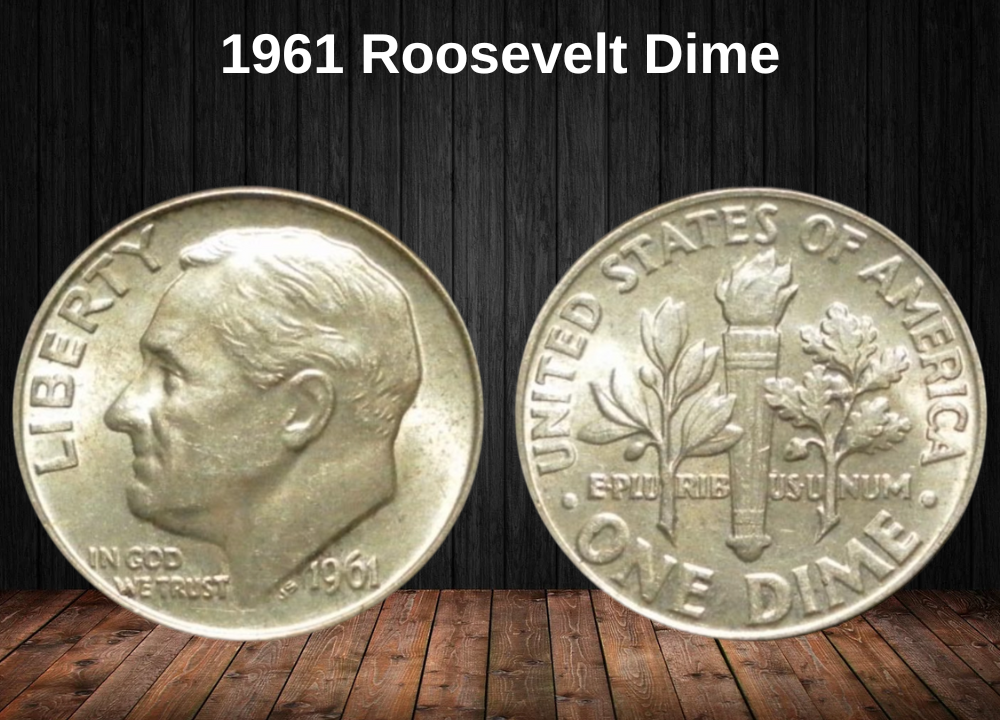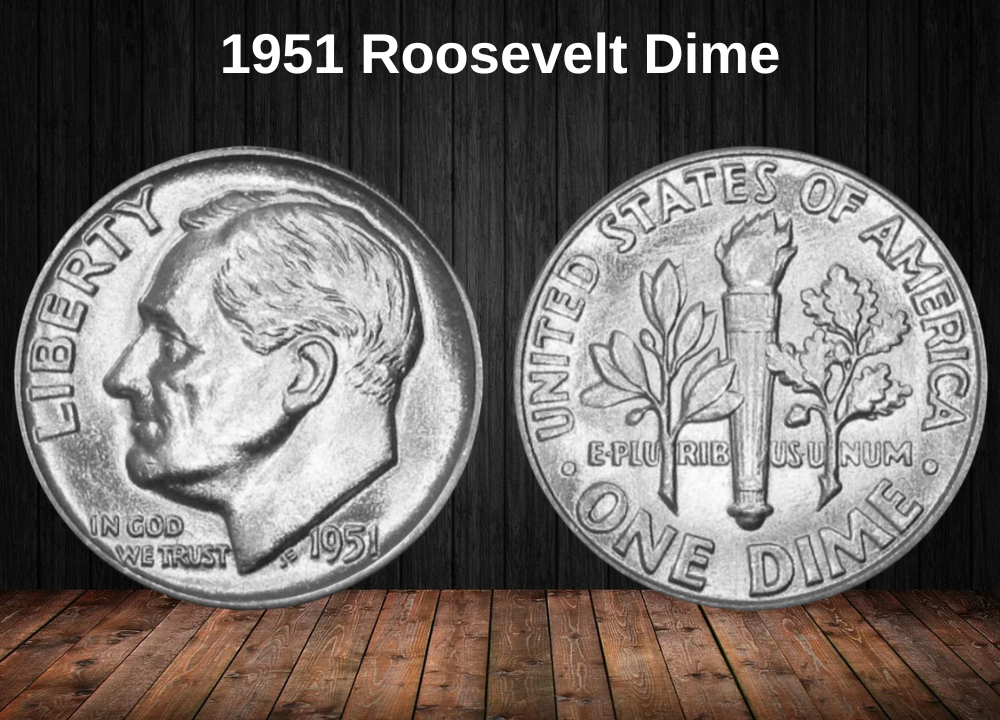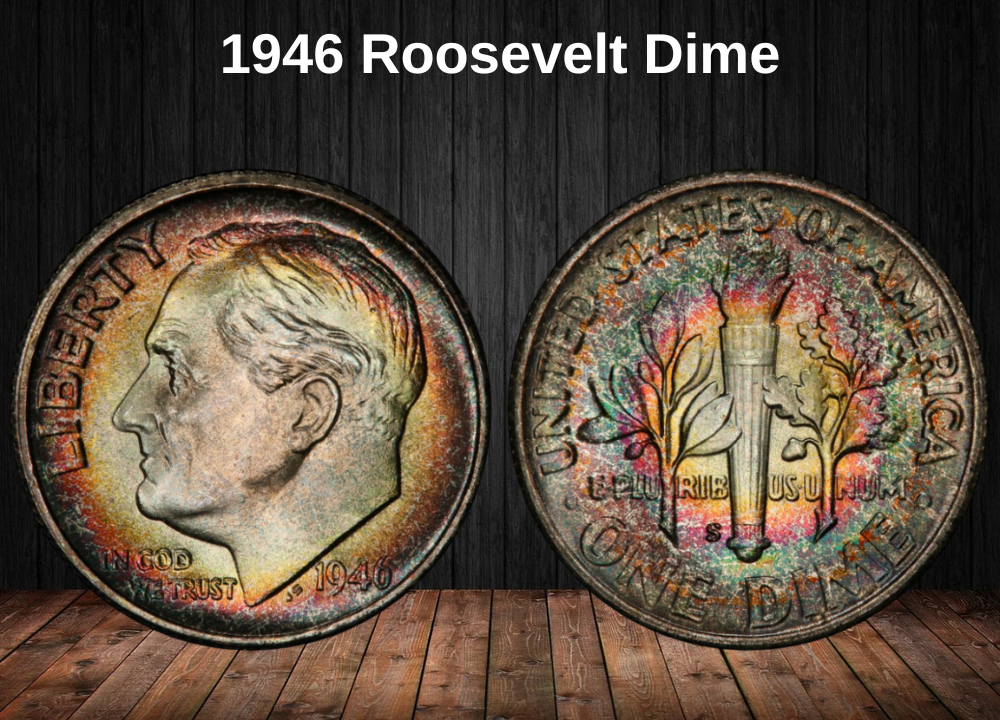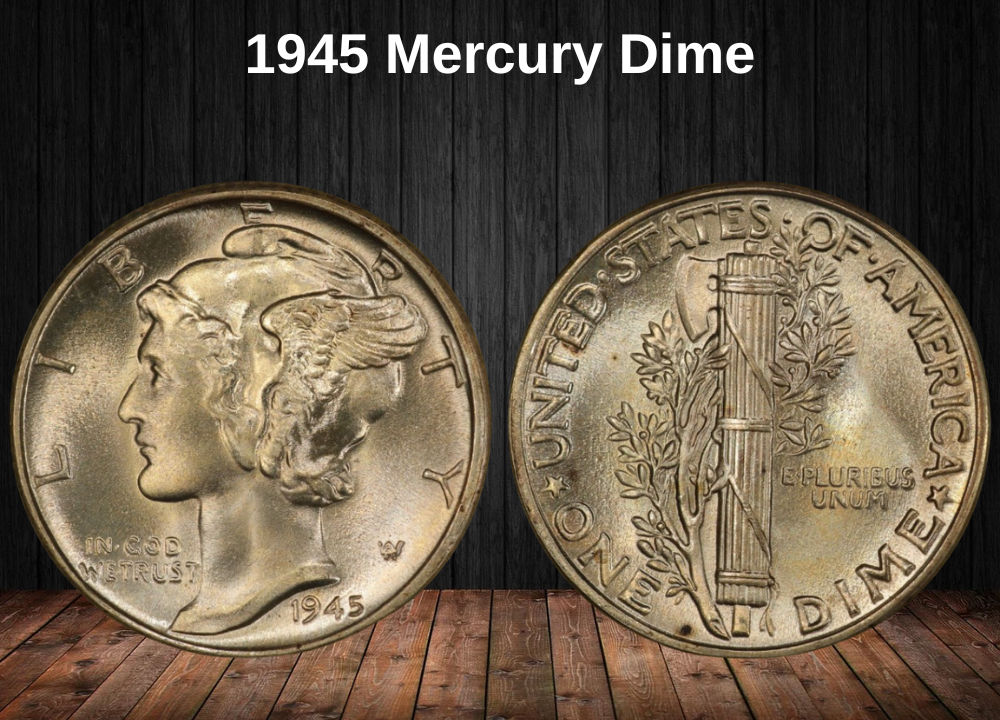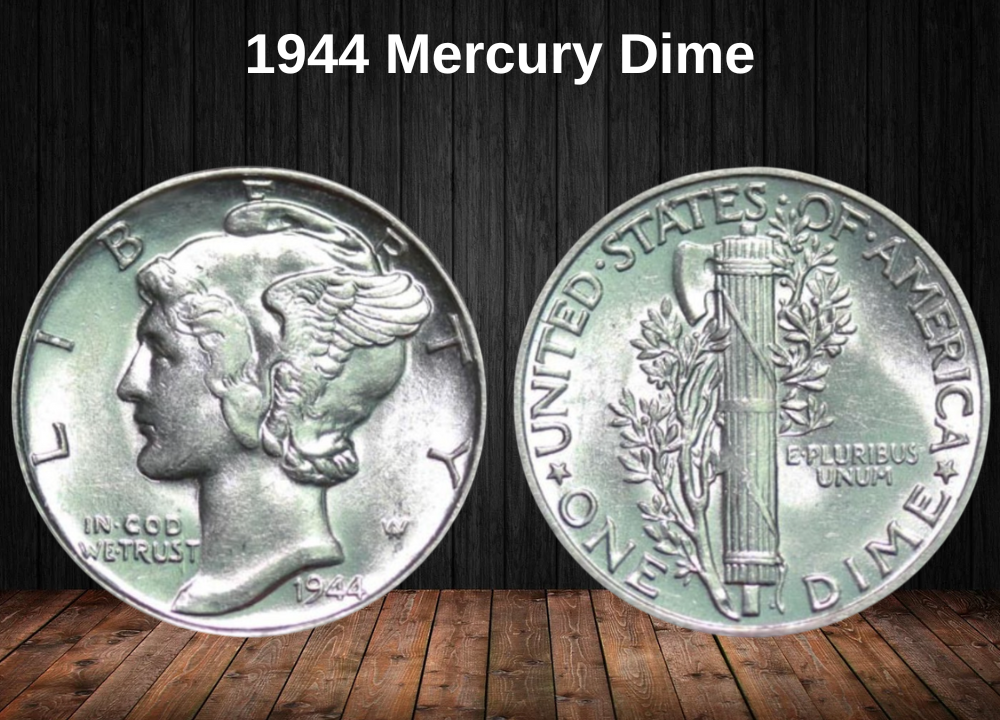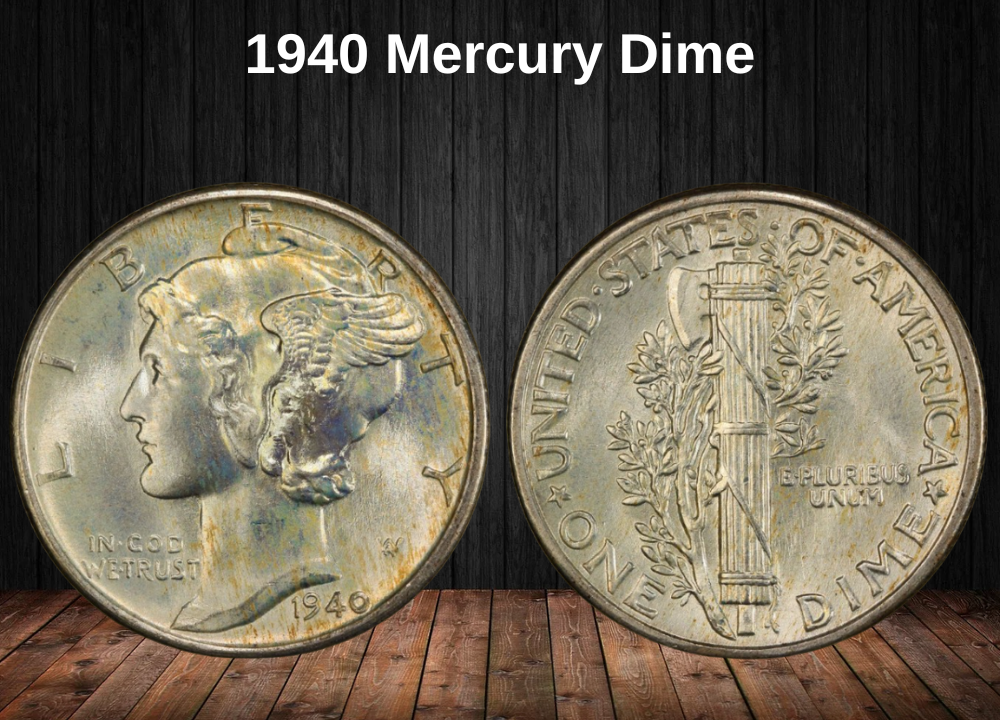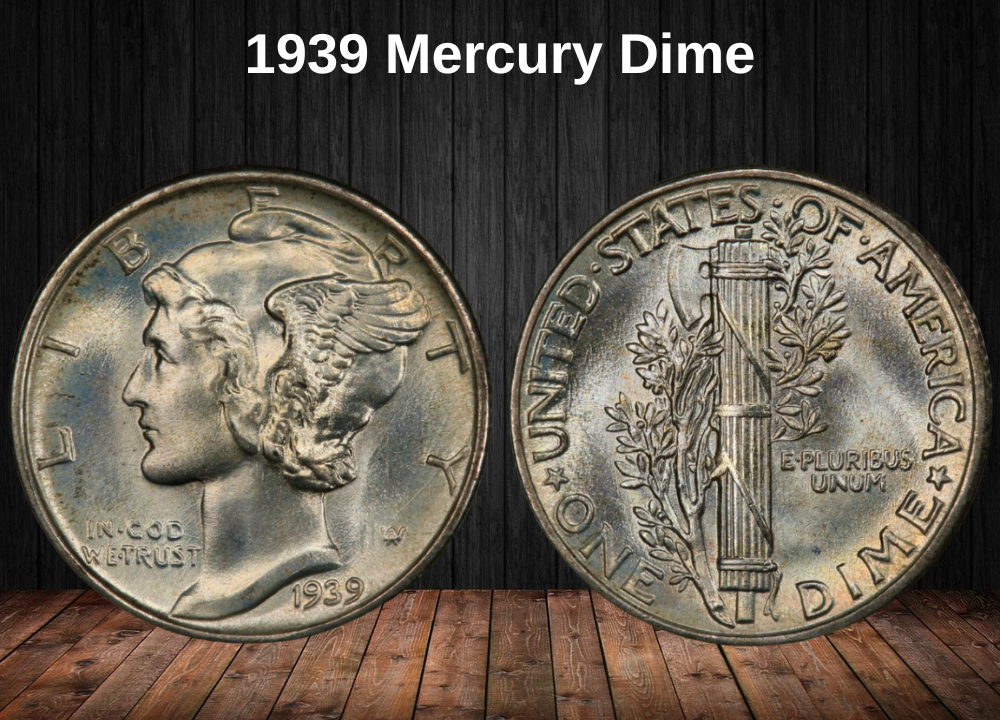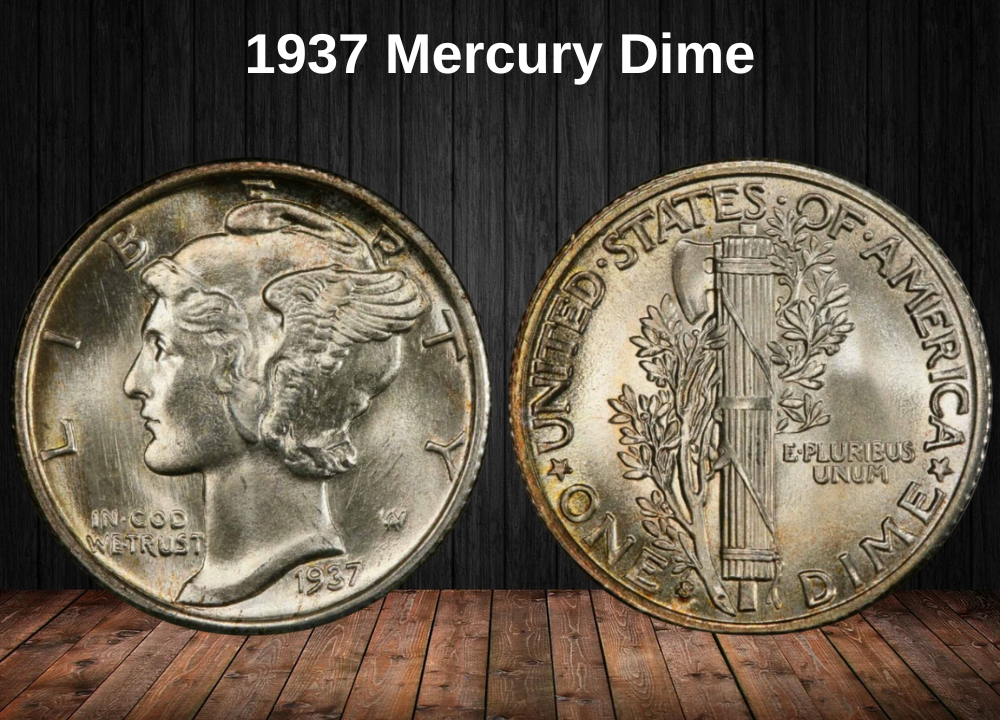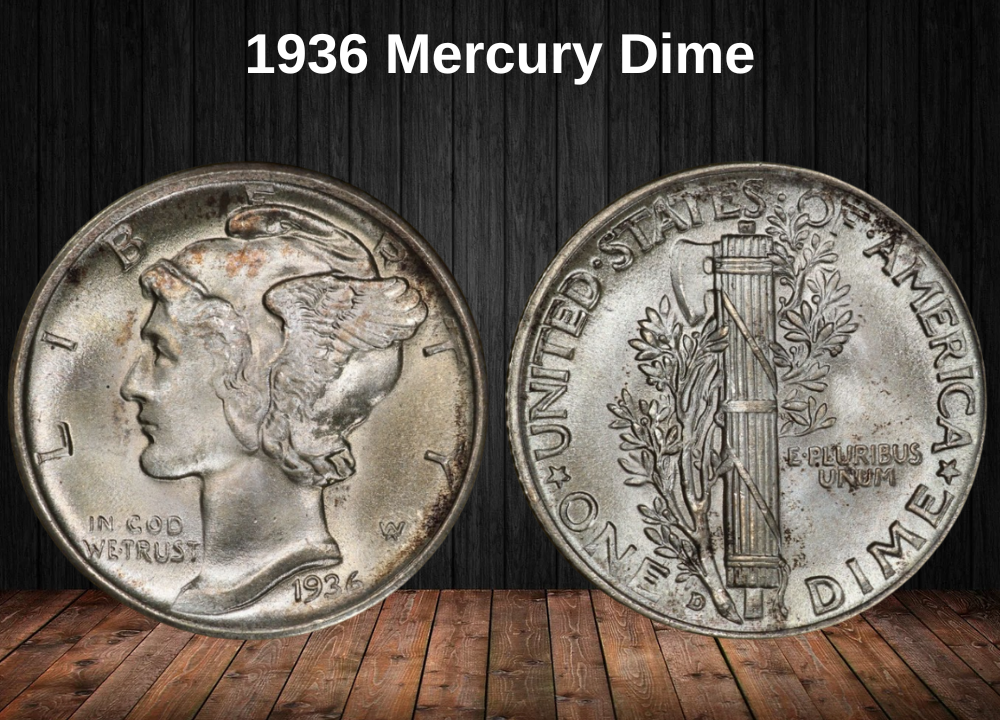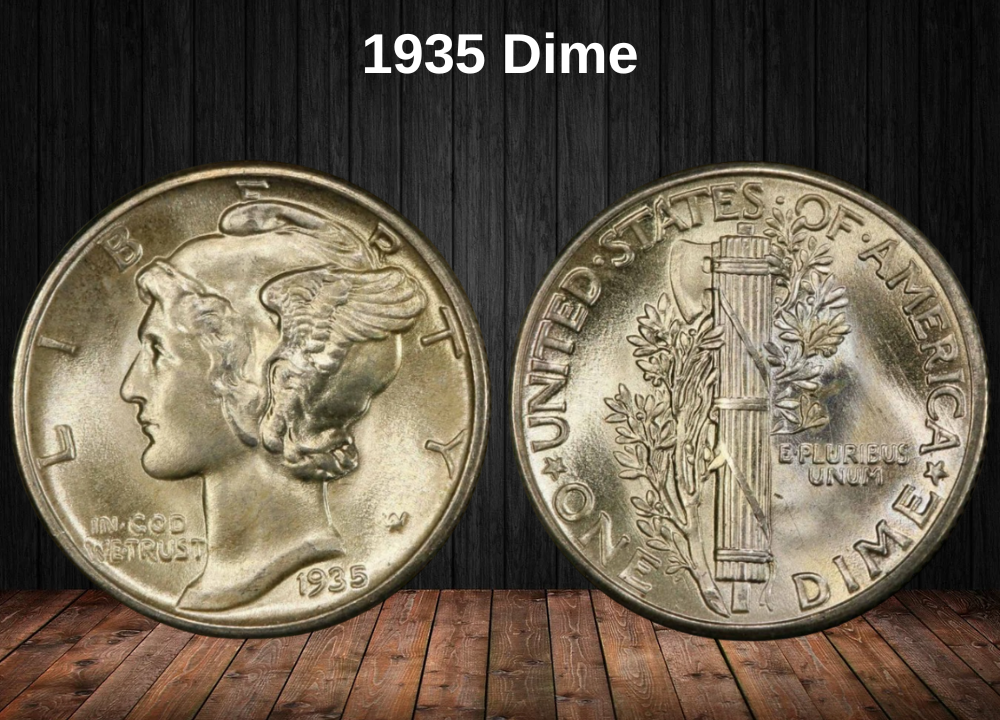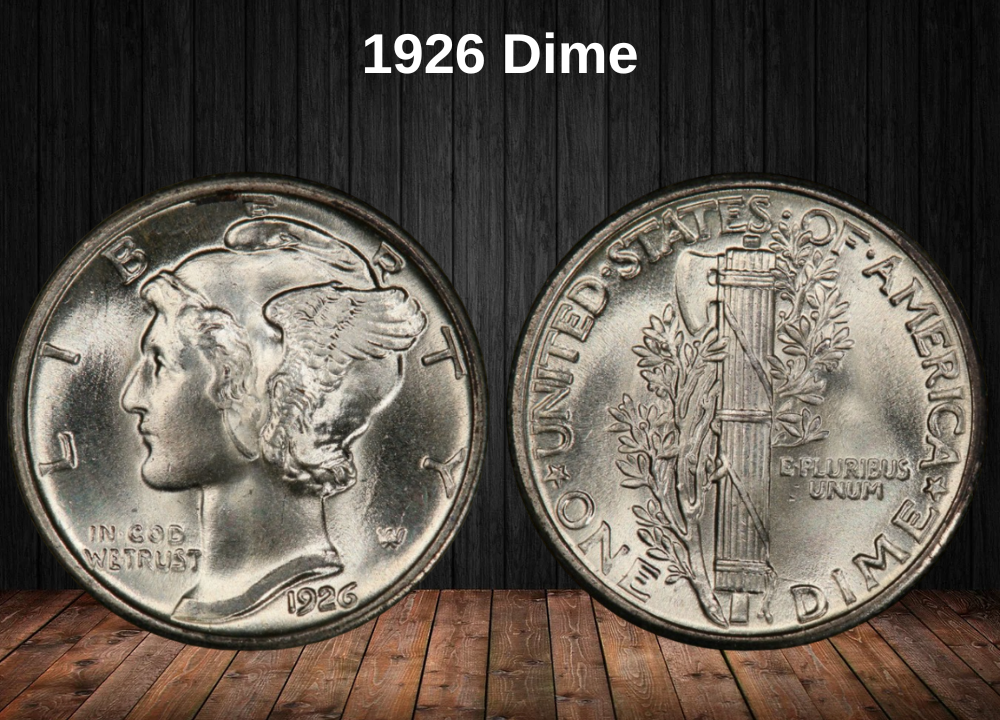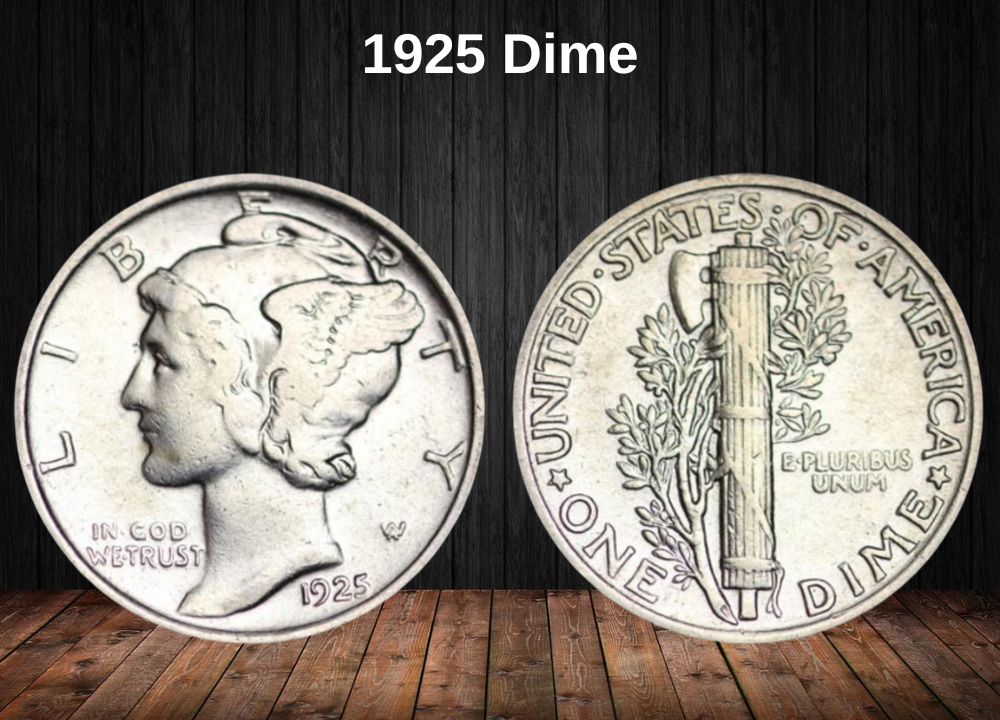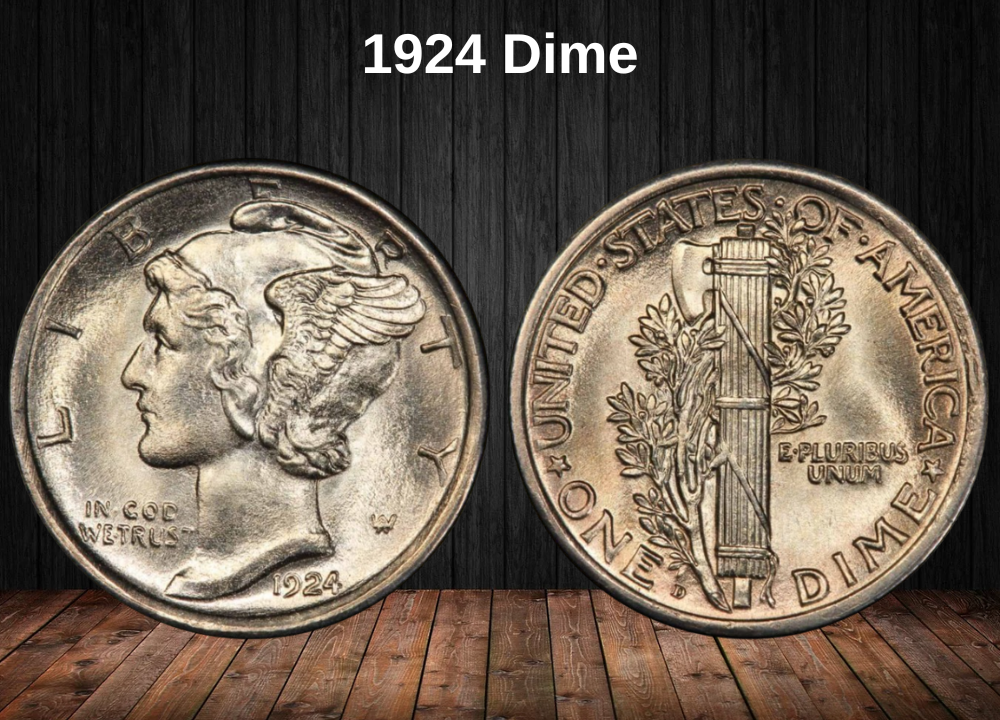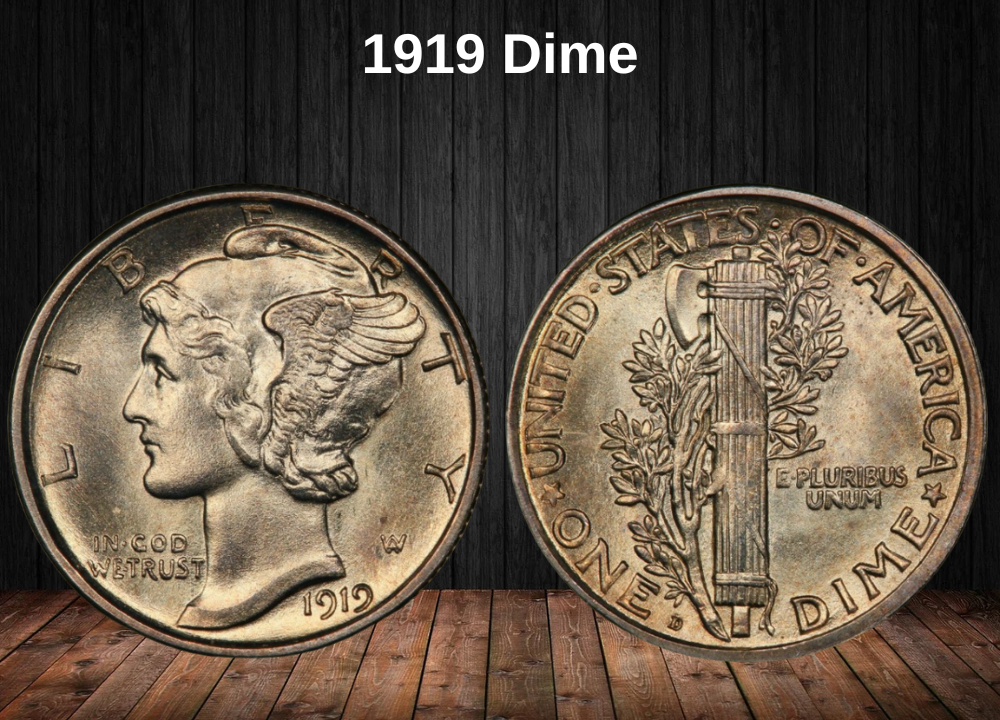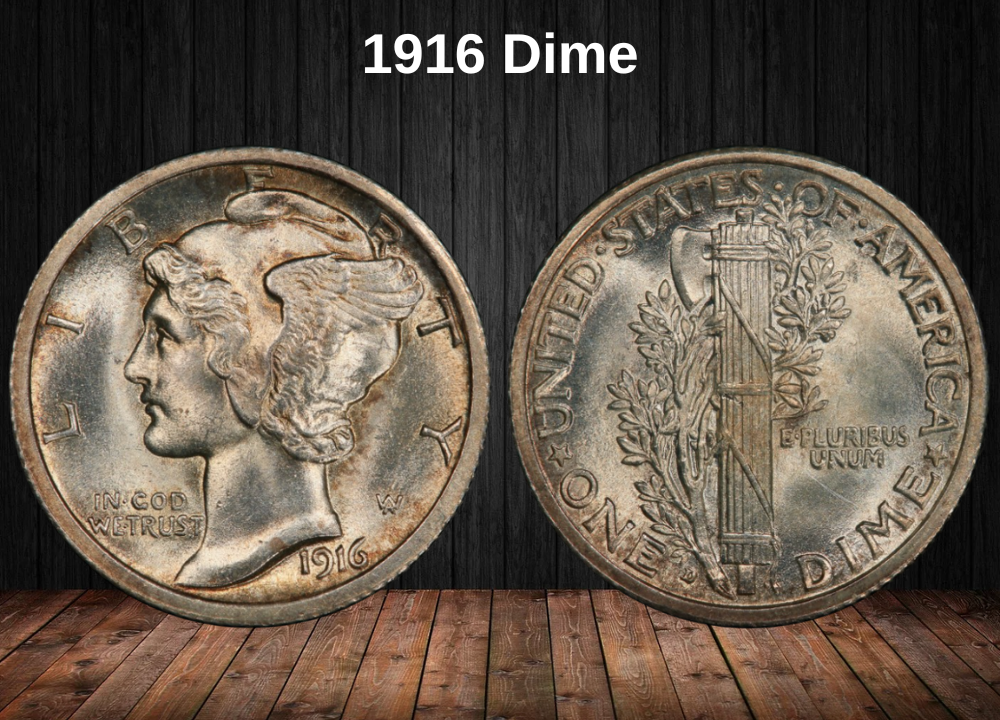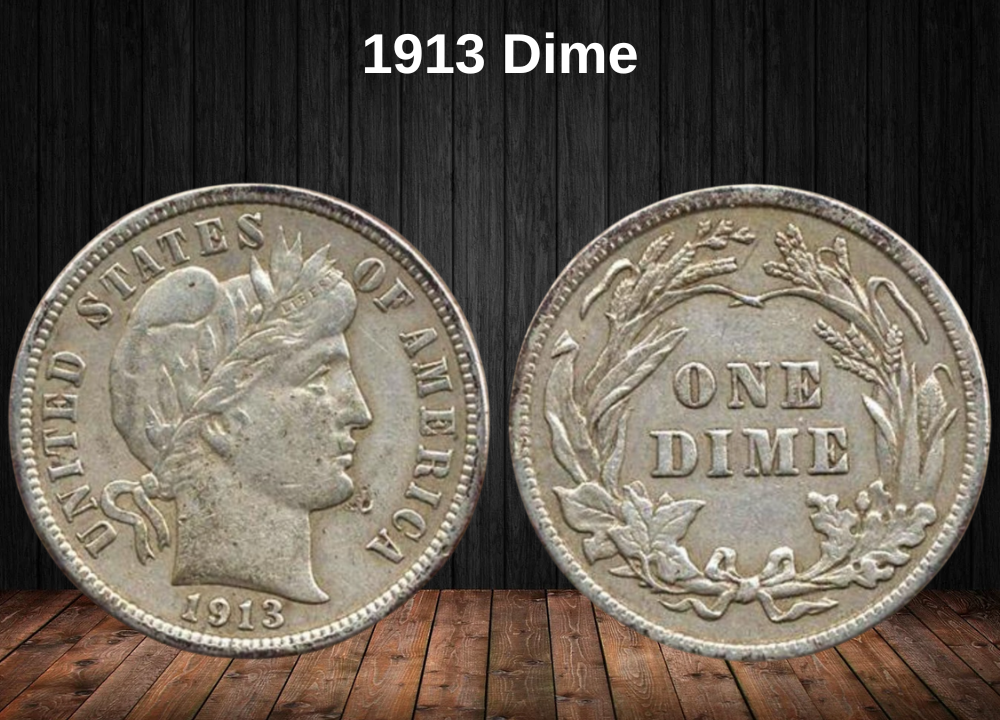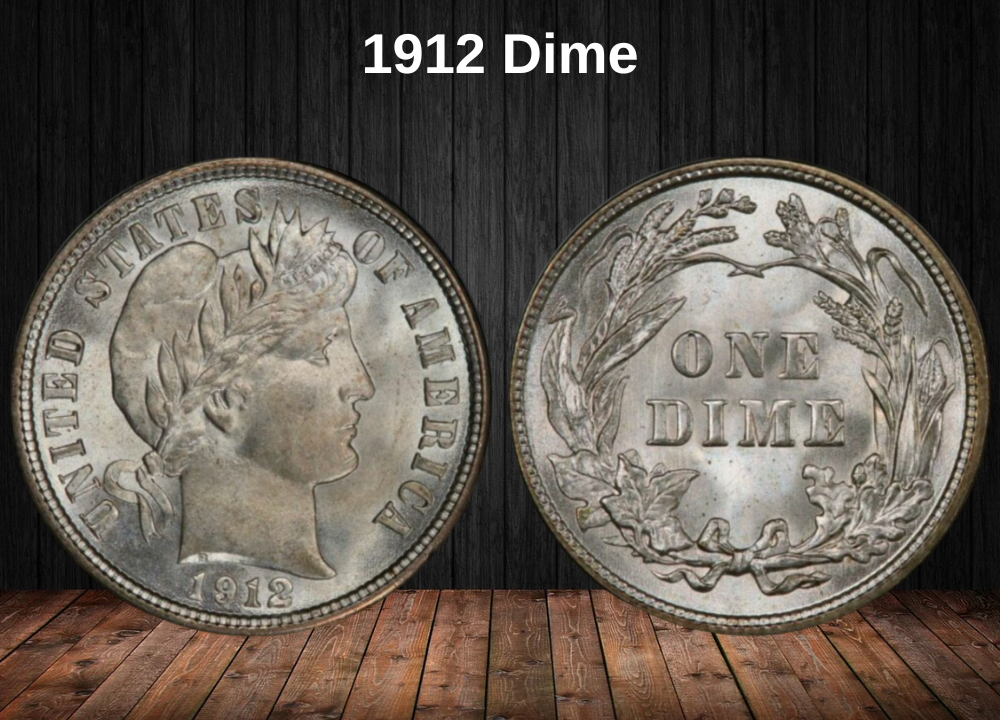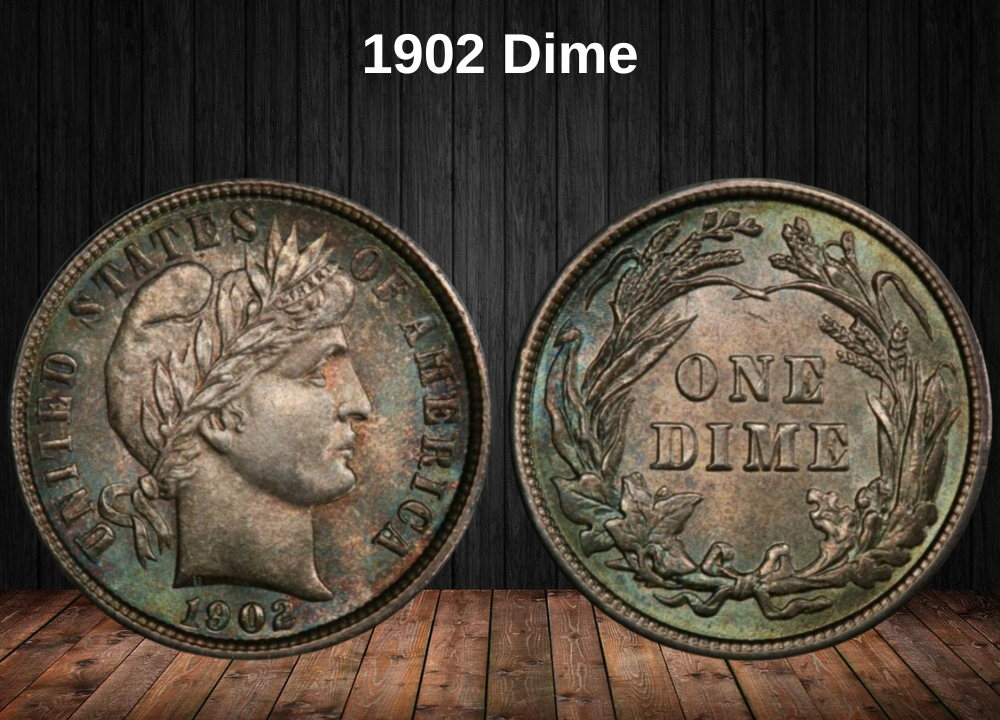If you’ve come across a dime dated 1941, you might be wondering if it’s worth more than ten cents. The answer depends on mint mark, condition, and strike quality—and in some cases, rare errors can raise the value into the thousands.
Below we’ll explore values by mint mark and grade, plus the rarest 1941 Mercury dime errors that collectors love.
1941 Dime Value Chart
| Mint mark | XF45 | MS60 | MS65 | MS67 |
|---|---|---|---|---|
| 1941 (P) No Mint Mark | $5 | $12 (FB: $15) | $53 (FB: $68) | $110 (FB: $210) |
| 1941 D | $5 | $12 (FB: $15) | $53 (FB: $68) | $110 (FB: $240) |
| 1941 S | $5 | $12 (FB: $20) | $53 (FB: $75) | $110 (FB: $265) Full band prooflike: $1,750 |
| Grade | PR60 | PR65 | PR67 | PR69 |
|---|---|---|---|---|
| 1941 (P) Proof | $125 | $210 | $365 | $50,000 (Cameo: $11,000) |
History of the 1941 Mercury Dime
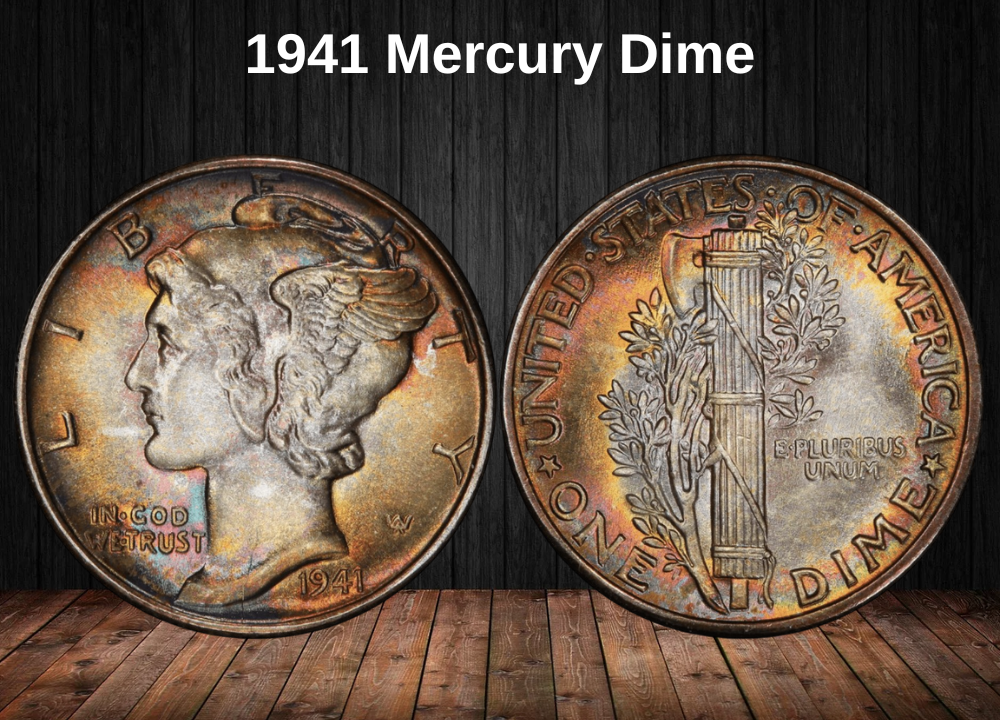
The 1941 ten-cent coin belongs to the famous “Mercury dime” series, minted from 1916 to 1945. Despite its nickname, the coin does not actually depict Mercury, the Roman messenger god. Instead, sculptor Adolph A. Weinman designed Lady Liberty wearing a winged Phrygian cap, symbolizing freedom of thought. Because of the wings, however, Americans quickly associated the design with Mercury—hence the name.
Back in 1916, U.S. Mint Director Robert W. Woolley mistakenly believed that coin designs had to be changed after 25 years. In truth, 25 years was only the minimum period before changes could be considered without Congressional approval. Acting on this misunderstanding, Woolley commissioned new designs not only for the dime, but also for the quarter and half dollar.
Unhappy with the Mint engravers’ proposals, Woolley launched a national design competition. Weinman’s work stood out, and he was awarded the honor of redesigning both the dime and the half dollar. His Winged Liberty Head design became an instant classic.
Production of the Mercury dime was strong in its early years, but the Great Depression dramatically slowed demand for coinage. In fact, no dimes were struck at all in 1932 or 1933. By the mid-1930s, the economy began to recover, and coinage resumed.
In 1941, the Philadelphia, Denver, and San Francisco Mints were all in full operation, together producing nearly 265 million dimes—a record-setting mintage at the time. These coins circulated widely during the early years of World War II, making them one of the most common issues in the series today.
The Mercury dime series finally came to an end in 1945, when the design was replaced with the Roosevelt dime to honor the recently deceased President Franklin D. Roosevelt, a beloved leader during the war.
Features of the 1941 Mercury Dime
The Obverse of the 1941 Dime
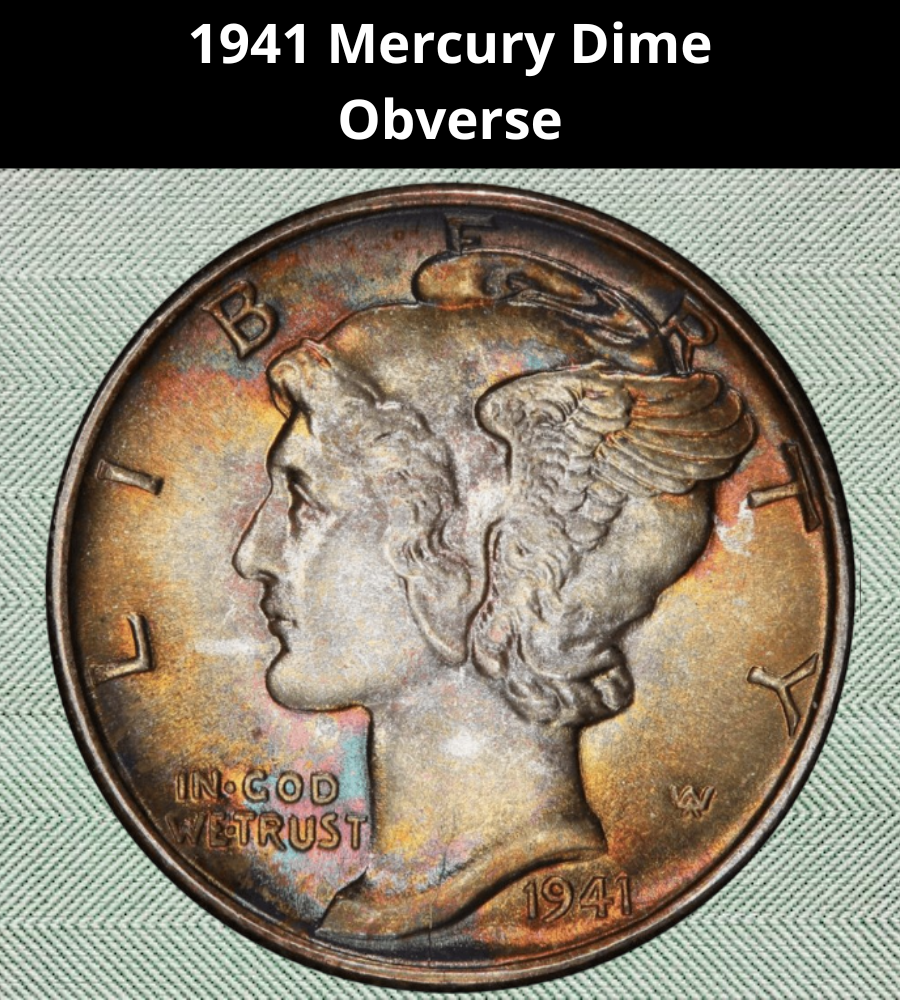
The obverse – or “heads” side – of the 1941 Mercury dime features Lady Liberty in a winged Phrygian cap, symbolizing freedom of thought.
Although the figure is unmistakably female, many Americans at the time believed the design depicted Mercury, the Roman messenger god. This misidentification gave rise to the enduring nickname “Mercury dime”, though numismatists often prefer the correct term: Winged Liberty Head dime.
The artist was Adolph A. Weinman, one of the most celebrated sculptors of his era. While he never officially revealed his model, most historians believe it was Elsie Stevens, wife of poet Wallace Stevens, who rented an apartment from Weinman in Manhattan.
The portrait shows Liberty in profile, facing left. Around her head curves the word LIBERTY, with parts of the letters “E” and “R” tucked behind her cap. Beneath the chin sits the motto IN GOD WE TRUST, while the date 1941 is placed at the lower right edge. Just above the date appears Weinman’s artist’s monogram, “AW”.
The Reverse of the 1941 Dime
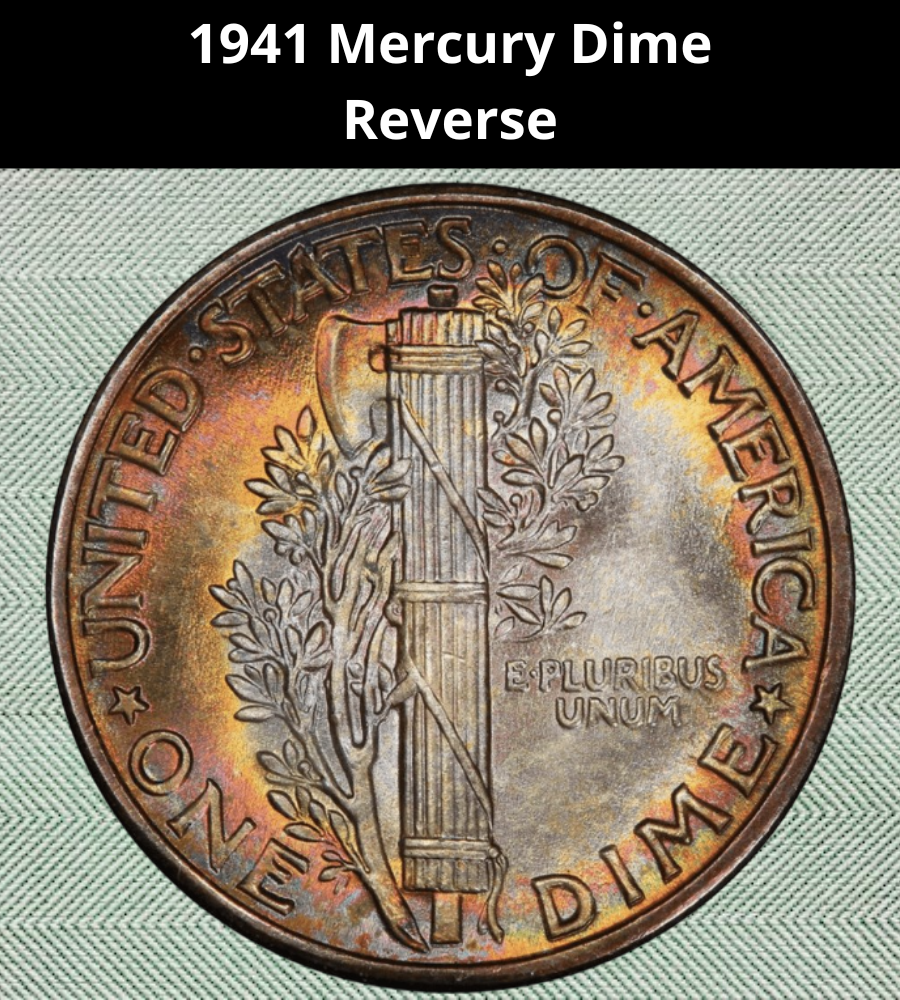
The reverse also carries a classical Roman motif. Weinman chose the fasces, a bundle of sticks bound together with an axe blade, an ancient symbol of strength, authority, and justice. Intertwined with it is an olive branch, balancing the theme with the promise of peace.
The inscriptions circle the design:
- UNITED · STATES · OF · AMERICA along the top
- ONE DIME along the bottom, separated by two stars
- The motto E PLURIBUS UNUM (“From many, one”) to the right of the fasces.
Mint marks are found on the reverse, to the right of the base of the olive branch, just above the “E” in ONE. A small “D” signifies the Denver Mint, an “S” stands for San Francisco, and Philadelphia coins have no mint mark.
Other Features of the 1941 Dime
Collectors prize certain well-struck examples known as Full Band (FB) or Full Split Band (FSB) dimes. This designation refers specifically to the central horizontal bands that bind the fasces. For a coin to qualify, the line separating the two bands must be sharp and fully visible.
Because such precision required stronger strikes, FB dimes are significantly scarcer and command higher premiums, especially in higher Mint State grades.
1941 Mercury Dime Grading
| # | Grade |
|---|---|
| 1 | Basal State-1 |
| 2 | Fair |
| 3 | Very Fair |
| 4, 5, 6 | Good |
| 7, 8, 10 | Very Good |
| 12, 15 | Fine |
| 20, 30 | Very Fine |
| 40 | Extremely Fine |
| 50 | About Uncirculated |
| 60 | Mint State |
| 65 | Mint State |
| 70 | Mint State |
1941 Dime Value Guides
1941 No Mint Mark Dime Value (Philadelphia)
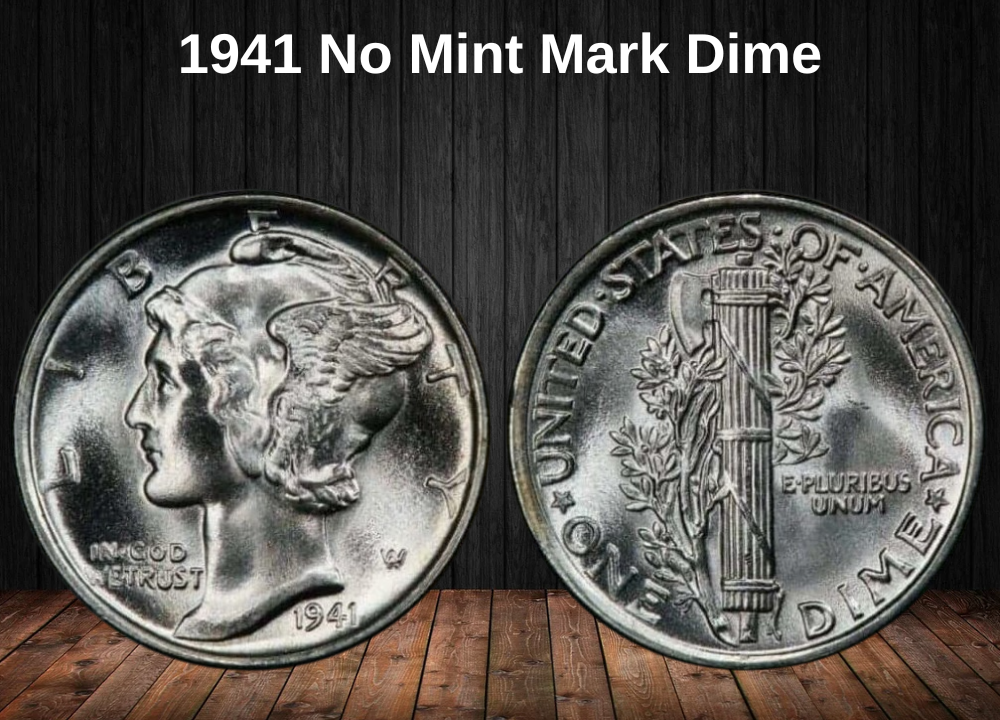
The Philadelphia Mint struck over 175 million dimes in 1941. These coins carry no mint mark on the reverse.
Today, the PCGS estimates about 10,000 examples survive, of which around 6,000 are mint state gems (graded MS65 or higher).
- Circulated examples (Grades 1–59): around $5
- Extremely Fine (XF45): about $6
- MS60: $12
- MS65: $68
- MS68+: the top known grade, with a value of $17,500
Coins with the Full Bands (FB) designation bring much higher premiums:
- MS60 FB: +$3 over base value
- MS68 FB: $2,600
- MS68+ FB (3 coins certified): $17,500 each
1941 D Dime Value (Denver)
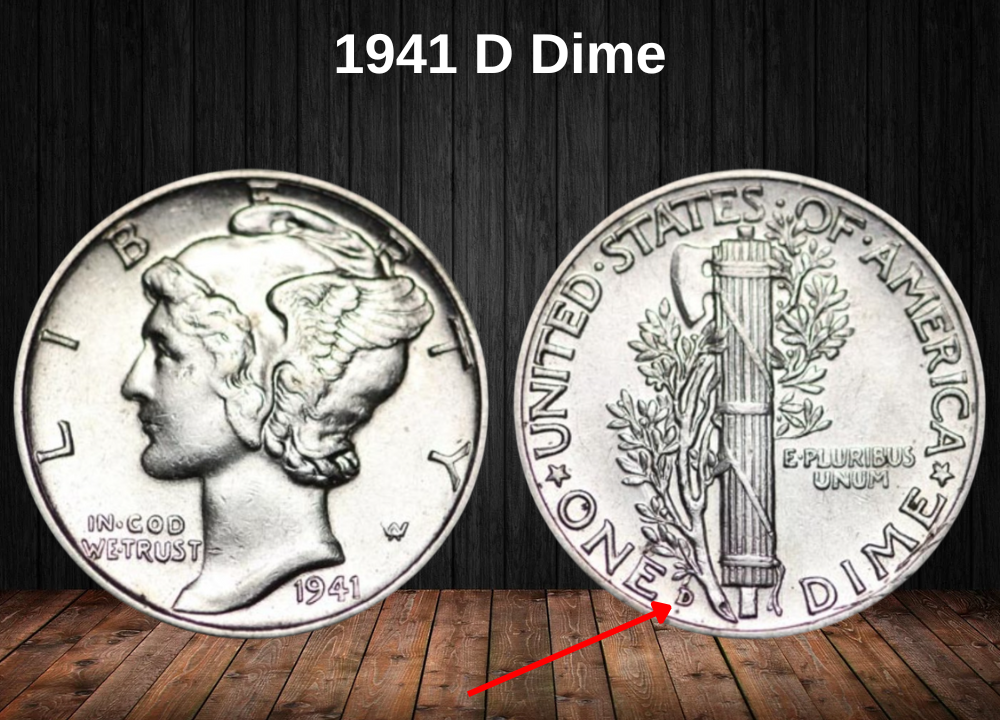
The Denver Mint struck 46.6 million dimes in 1941, far fewer than Philadelphia. However, prices are very similar across circulated and most mint state grades.
- MS60: $12
- MS65: $53
- MS68: $700 (only one coin certified so far)
For Full Bands:
- MS60 FB: $15
- MS68 FB: $1,750 (45 coins certified)
1941 S Dime Value (San Francisco)
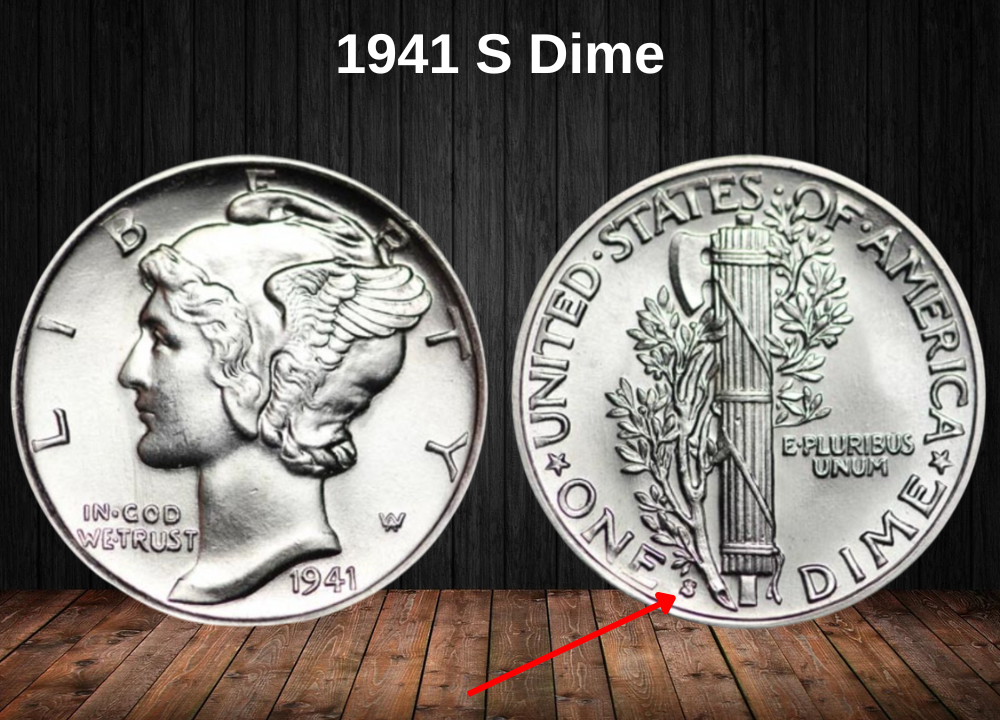
The San Francisco Mint produced fewer dimes than Philadelphia but more than Denver, with the “S” mint mark above ONE on the reverse.
- Circulated (XF45): $5
- MS60: $12
- MS65: $53
High-grade coins show a sharp increase in value:
- MS67 FB: $265
- MS68+ FB (2 coins certified): $20,000
Some rare “Full Band Prooflike” (PL) coins exist, with values ranging from:
- MS66 PL: $900
- MS68 PL: $5,500
1941 (P) Proof Dime Value (Philadelphia)

Philadelphia also struck 16,557 proof dimes in 1941 for collectors, using specially polished planchets and dies.
- PR55: $60
- PR60: $125
- PR65: $210
- PR69: $50,000
Special Cameo Proofs with frosted devices and mirror fields are even more desirable:
- PR67 Cameo: $11,000
Rare 1941 Dime Error List
1941 (P) Dime – Double Die Obverse (DDO)
Among the 1941 dimes minted in Philadelphia, some show a Double Die Obverse (DDO).
This happens when the coin die itself is misaligned during the hubbing process, leaving a doubled image that then transfers to the struck coins.
- These errors can usually be seen in the letters or date.
- Values depend heavily on grade and eye appeal.
- Auction Record: In 2019, an MS65 example sold on eBay for $2,695.
1941 D Dime – Double Die Obverse and Reverse
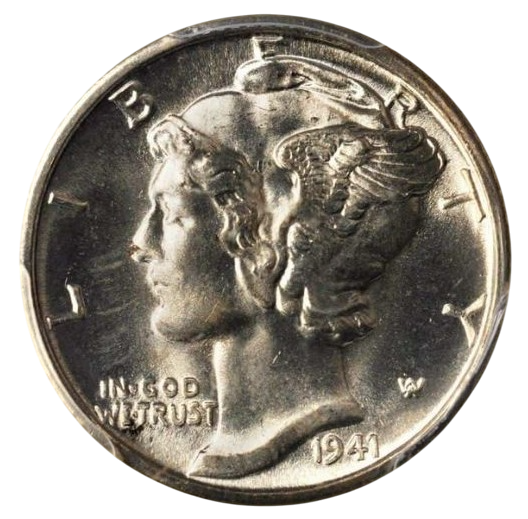
A highly unusual error from the Denver Mint features both a DDO and a DDR (Double Die Reverse) on the same coin.
- This rare variety shows doubling on both sides.
- One such coin, graded MS64 FB by PCGS, sold for just under $200 at auction.
1941 S Dime – Repunched Mint Mark (RPM)
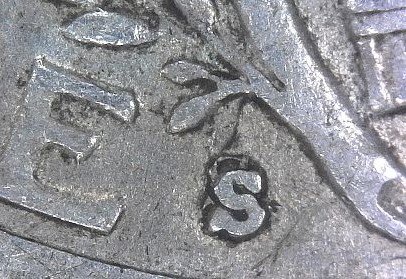
San Francisco dimes carry a small “S” mint mark on the reverse, just above the denomination. On some 1941-S examples, this mint mark was repunched, creating a visible outline of a second “S” when viewed with magnification.
- These errors are collectible across all grades, with higher premiums for mint state examples.
- A PCGS MS66 FB example realized nearly $500 at auction.
Where to Sell Your Dime Coin?
Now that you know the value of your dime, the next step is deciding where to sell it. There are several trusted options—both online and in person—that can help you get the best price depending on your coin’s rarity and condition.
To see the full list of recommended places, along with their advantages and disadvantages, check our complete guide on where to sell your dime coins.
FAQ about the 1941 Mercury Dime Value
1. How much is a 1941 Mercury dime worth?
A circulated 1941 Mercury dime is generally worth between $2 and $5, depending on wear. Mint State examples start at about $12, and high-grade Full Bands coins can reach into the hundreds or even thousands.
2. What is the most valuable 1941 dime?
The record goes to a 1941 proof Mercury dime graded PR69, which sold for $50,000. Among circulation strikes, a 1941-S Full Band dime graded MS68+ is valued around $20,000.
3. Where is the mint mark on a 1941 Mercury dime?
The mint mark is found on the reverse, to the left of the fasces, just above the “E” in ONE.
- No mint mark = Philadelphia
- “D” = Denver
- “S” = San Francisco
4. Are 1941 Mercury dimes made of silver?
Yes. All 1941 dimes are 90% silver and 10% copper, with a total silver weight of 0.0723 troy ounces.
5. What does “Full Bands” mean on a 1941 dime?
“Full Bands” refers to the sharply defined horizontal lines on the fasces on the reverse. Coins with this designation were struck with extra detail and are much rarer, bringing significant premiums.
6. What errors are found on the 1941 dime?
Some rare errors include:
- Double Die Obverse (DDO) in Philadelphia and Denver issues
- Double Die Reverse (DDR) on certain Denver coins
- Repunched Mint Mark (RPM) on San Francisco dimes
These error coins can be worth hundreds or even thousands depending on grade.
7. How many 1941 Mercury dimes were minted?
About 264.6 million were struck:
- Philadelphia: 175 million+
- Denver: 46.6 million
- San Francisco: 43 million
- Proofs (Philadelphia): 16,557
8. Are proof 1941 Mercury dimes valuable?
Yes. Proofs start around $125 in lower grades and can go as high as $50,000 for near-perfect PR69 examples. Cameo proofs are extremely rare and valuable, with one PR67 cameo valued around $11,000.


